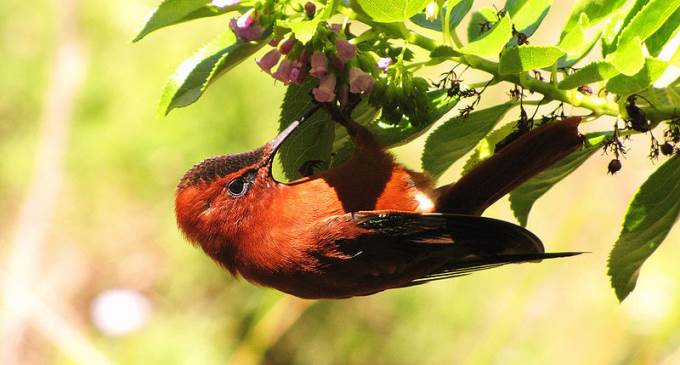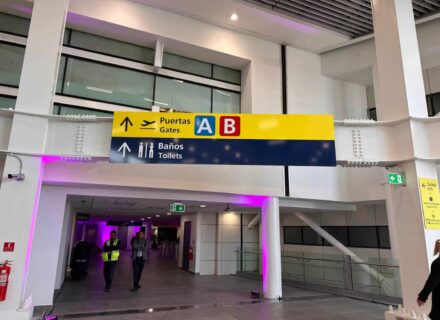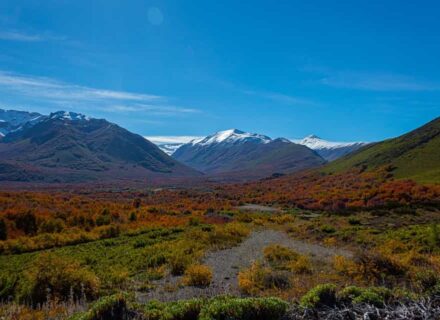Did you know that there are several places to do ornithological tourism in Chile? You can find many species in their natural state and beautiful landscapes to enjoy as well.
This long and narrow territory is home to a seemingly endless variety of birds. You can find them in the altiplano, in the Patagonia, in the forest, on the coasts and atop the Andean peaks. Chile is the perfect place for birdwatching fans, an increasingly popular activity that attracts enthusiasts from all over the world. The 133 wildlife areas protected by the National Committee for the Defense of Flora and Fauna cover 19 percent of the country’s surface area and allow for up-close encounters with even the most elusive species.
San Carlos de Apoquindo
In Santiago one of the best places to do birdwatching is San Carlos Park, in Las Condes, where there have been identified 70 species of birds, most of them are Passerines or Songbirds, as the Thorn-tailed Rayadito, the Tufted Tit-Spinetail and the Rufous-banded miner. There you can walk through trails and do trekking while you climb the hills and watch species like Rufous-collared sparrow, Common Diuca Finch, the Chilean mockingbird or the Chilean flicker. And if you are lucky, you could watch the Andean Condor, Crag chilia, owls as the Magellanic horned owl, also Eagles, a Chilean hawk or Cinereous harrier hunting a prey. But definitely, the most coveted bird of The Andes is the famous Diameded sandpiper plover, a little bird which doesn’t exist much information about it and lives in places of difficult access near water.
Batuco wetland
This wetland is 30 kilometers to the north-east of the capital and it is composed of Batuco pond and San Rafael dam. There exist at least 50 types of birds, as the Fulvous whistling duck which visits occasionally our country, the Silvery grebe whose nests are floating, and Herons, White-tailed kite, Misto yellow-finch or swans. Specialists define this place as “the most important natural wetland in the Metropolitan Region”, in part because there live many endangered species as the Stripe-backed bittern, Short-eared owl, Black-necked swan, White-necked (Cocoi) heron, and the Red shoveler, among others.

Mantagua wetland
It is part of a network of coastal wetlands from the 5th region of Valparaíso, between Concón and Quintero. There are five different ecosystems as the wetland, forests, dune field, coastline, and ravines in a small space. Because of this, 75 different species of birds, some of them are the Many-colored rush-tyrant – known as the most beautiful bird in Chile- and the Wren-like rush-bird. It is also possible to find the shy South American painted-snipe, Landbeck’s rail, Neotropic cormorant, some Red gartered coots chasing on the water or the Great grebe. This site also offers a different way of doing Birdwatching, because inside the wetland there is the lodging of the Park, where you can rent kayaks or go horse riding.
Cachagua Island
The Cachagua Island is 183 kilometers to the north-east of Santiago. It is also known as the penguin island, an ideal trip for the whole family. It is recommended to carry good binoculars: you can find Magellanic penguins and a population of more than 20,000 Humboldt penguins, which are unique species in this area of the Chilean coast. You can also see Peruvian pelicans, Neotropic cormoranst, and a variety of seagulls and seabirds as Whimbrels and Inca terns. In addition, you can find little dolphins and sea otters that will amaze children.
National Reserve Los Cipreses River
This reserve is 50 kilometers from Rancagua, in Coya. It is characterized by its valleys and the Basin of Los Cipreses River which presents a variety of birds, one of them is the Burrowing parrot. In this reserve there are many parrots of this species, it is endangered and it is one of the most colorful specimens in Chile. They construct their nests in cliffs, so it’s possible to watch them from Cachapoal River in the morning, when they go outside to eat, and during the evening when they go back to their nests. Also, you can see other types of parrots a little bit smaller, the Austral parakeet, and at the summit you can see Andean Condors or Eagles.
Nevado Tres Cruces National Park
This is a destination of great beauty and home to a wide range of fauna in the third region. The best time to visit is between December and February because of the 8,000 flamingoes that migrate here in the summer. You can also find giant horned coots, Andean geese and gulls
Robison Crusoe Island
Adventurous travelers can visit Robinson Crusoe Island for a chance to see the Juan Fernández red hummingbird, a native species in danger of extinction (there are currently fewer than 400 left), and take in the beauty of its lovely song in the middle of a native forest.
Some companies offer trips based on birdwatching or one-day excursion.
Before enjoying Chile’s birds and scenery, it’s a good idea to find a quality guide. The two most respected books of this kind are Aves de Chile by Álvaro Jaramillo, the most complete Spanish-language guide to the country’s avian population, and Lista comentada de las aves en Chile by Manuel Marín. You can also find more information at Birdwatching Chile.



